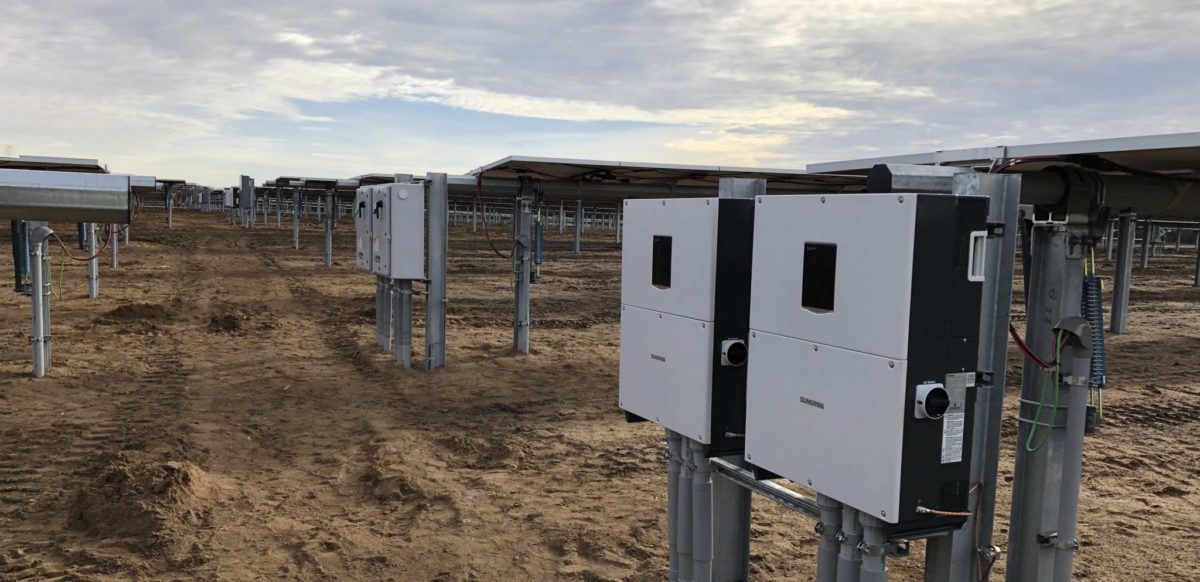The inclusion of inverters in the 10% tariffs proposed for $200 billion worth of Chinese products will not make or break the U.S. solar market. Compared to the Section 201 module tariffs the affects on the overall market is likely to be tiny, with an estimated affect on system prices from 1-2 cents per watt for many residential and commercial and industrial projects, and less than one cent per watt for utility-scale projects.
However, for individual inverter makers, the impact could be much more serious. Scott Moskowitz, research manager at GTM Research notes that the majority of residential and commercial inverters in the United States come from China, estimating that more than 80% of residential inverters and more than 50% of commercial inverters are imported from China.
“Certain vendors will be more affected than others,” Moskowitz told pv magazine. Among those who are vulnerable is Enphase, which does all of its manufacturing through OEMs in China, while its biggest rival in the residential space, SolarEdge, has manufacturing facilities in North America and Europe.
This is particularly difficult for Enphase, which has fought tooth and nail to return to profitability after years of losses, after deliberately pricing its inverters under the cost of production in a bid to keep its U.S. market share while it slashed costs. This included a restructuring of the company.
However, the overall situation is more complicated. Moskowitz notes that most vendors in the residential space use OEMs that have global facilities, so there is the possibility of shifting manufacturing out of China for product that is headed for the U.S. market.
Central inverters
For central inverters, the picture is more nuanced, and the impacts less clear. The two largest central inverter suppliers to the U.S. market – SMA and Power Electronics – manufacture in Europe.
For Chinese inverter makers such as Huawei and Sungrow which have broken into the U.S. market in recent years, the 10% tariffs are clearly not welcome, although some staff have privately expressed to pv magazine that they are relieved that the number is not higher.
However, according to GTM Research the cost difference in utility-scale inverters is the largest of any inverter segment, with Chinese central inverters far cheaper than their European-made rivals. “The price advantage will still be there (for Chinese inverters)” notes Moskowitz.
“It’s another headache for Huawei,” said Moskowitz. “They had a long arduous journey to become a major player in the United states, and they have struggled to become that. This isn’t necessarily a major wound, but it won’t help.”
Other inverter makers such as Yaskawa/Solectria have the option to shift manufacturing, and it is notable that Chint announced a new pilot line to serve the U.S. market only days before the list of products including inverters was announced.
However, it is unclear yet whether or not 10% tariffs – combined with a lower U.S. corporate tax rate in the wake of last fall’s tax reform – will be enough to bring any significant resurgence in U.S. inverter manufacturing.
Another impact of the proposed 10% tariffs would be on trackers. GTM Research notes that many tracker makers avoided the steel and aluminum tariffs by bringing in finished product instead of raw steel, however the company reports multiple codes related to finished steel products in the list of items proposed for import duties.
This content is protected by copyright and may not be reused. If you want to cooperate with us and would like to reuse some of our content, please contact: editors@pv-magazine.com.









By submitting this form you agree to pv magazine using your data for the purposes of publishing your comment.
Your personal data will only be disclosed or otherwise transmitted to third parties for the purposes of spam filtering or if this is necessary for technical maintenance of the website. Any other transfer to third parties will not take place unless this is justified on the basis of applicable data protection regulations or if pv magazine is legally obliged to do so.
You may revoke this consent at any time with effect for the future, in which case your personal data will be deleted immediately. Otherwise, your data will be deleted if pv magazine has processed your request or the purpose of data storage is fulfilled.
Further information on data privacy can be found in our Data Protection Policy.